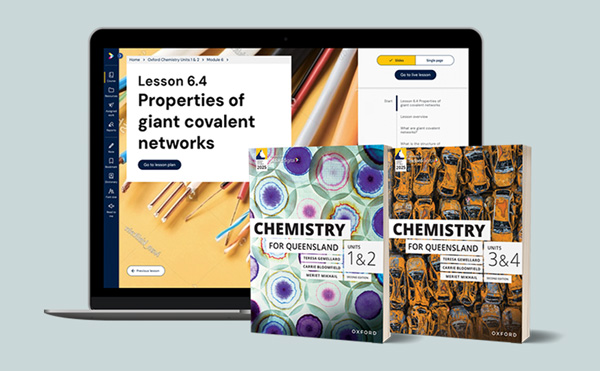A guide to the new syllabus
Produced by an expert team of teachers, authors and learning designers, this guide contains a summary of the key changes to the Queensland
Certificate of Education (QCE) General Senior Syllabuses 2025 (Version1.1) for Chemistry.
Download your guide
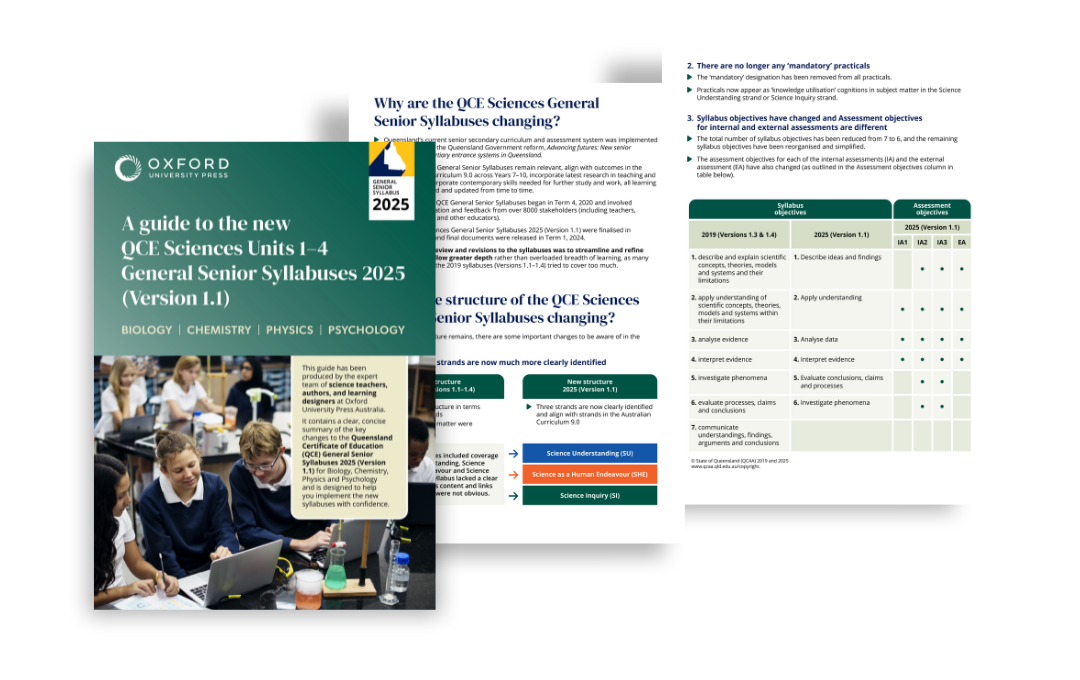
The #1 choice for QCE Chemistry
Chemistry for Queensland Units 1–4 (Second edition) has been updated to align to the Chemistry 2025 General Senior Syllabus.
This new edition retains the best-in-market print Student Books, featuring a new ground-breaking digital teaching and learning experience that takes lesson planning and in-class instruction to a new level.
Guide every student to achieve their best with clear learning intentions and success criteria mapped to the syllabus. Students are supported at every step with targeted resources to address gaps in understanding. Prior knowledge quizzes lay the foundation, while ongoing confidence checks against success criteria ensure students stay on track and succeed!
A brand-new Oxford Digital is preparing for launch!
Designed with teachers around Australia, our next-generation digital platform ushers in a new era of interactive teaching and personalised learning!
Watch our video for a quick 5-minute tour and contact us for a demonstration.
Contact us for a demonstration
Please note, this is a video of QCE Biology to demonstrate what the platform looks like.
Full support for the new syllabus
✔ Course content carefully aligned to the 2025 syllabus, with the depth and rigor for students to succeed, but nothing more.
✔ Timed, interactive lesson plans to help you achieve notational times and deliver engaging lessons, including in investigations.
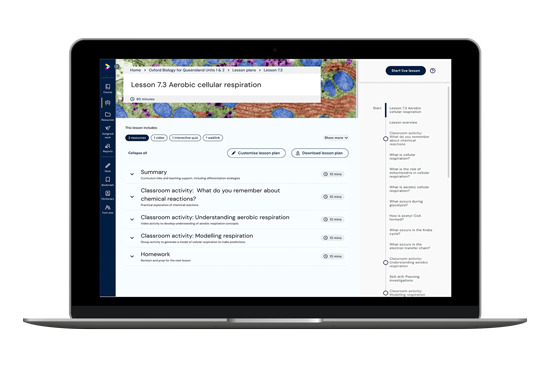
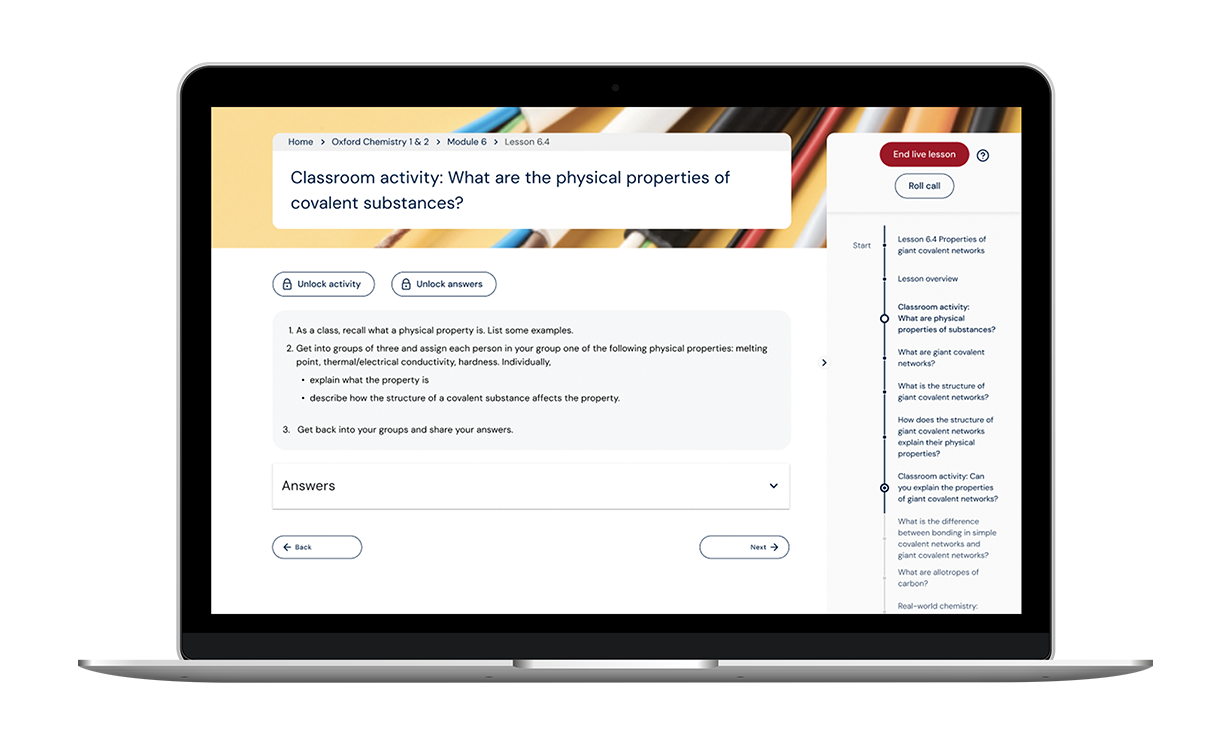
Bring scientific concepts to life
✔ Real-world examples are embedded throughout the lessons, linking science understanding with life and making Chemistry more relevant for your students.
✔ Step-by-step worked examples, engaging illustrations, and student-friendly language that clicks!
✔ Videos for all key assessment tasks and practicals. Watch in-class to introduce new concepts, support flipped classroom strategies and blended learning approaches. The choice is yours!
A digital experience that sets a new standard for interactive learning
✔ An accessible, web-based experience with thousands of integrated images, videos, quizzes and assessments embedded right where students need them.
✔ Bite-sized content and personalised learning activities to support students of all abilities.
✔ Introducing Live Lesson mode, an Australian first that lets you say goodbye to print-based lesson plans in favour of fully integrated, perfectly sequenced interactive lessons complete with classroom activities.
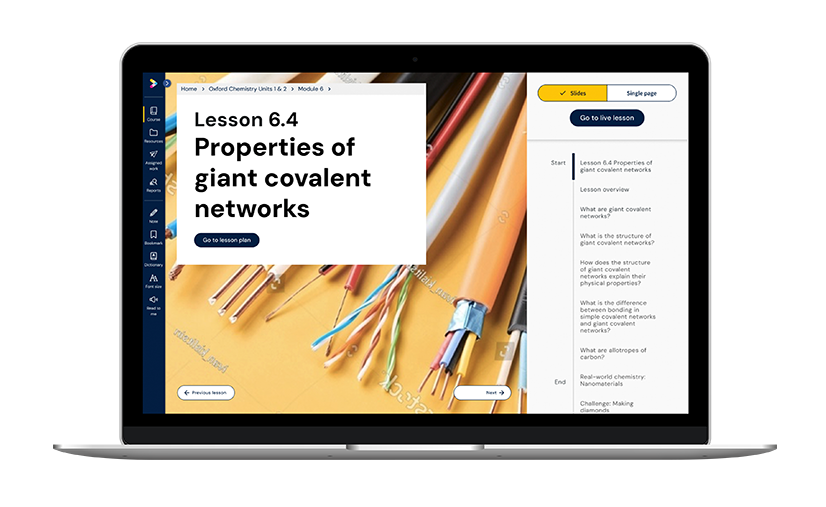
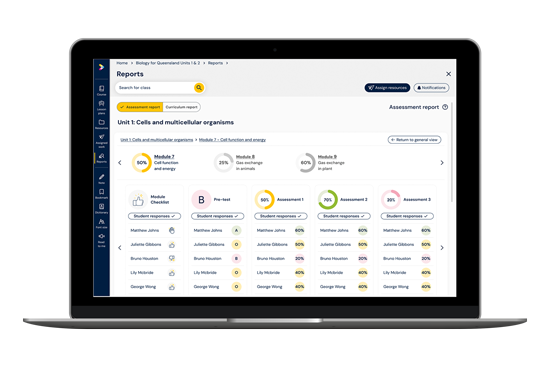
Teach with powerful reporting at your fingertips
✔ Planning, marking and reporting with powerful analytics on student performance and engagement.
✔ At-a-glance view of student confidence levels, making it simple to provide targeted support where it’s needed most.
Bring the curriculum to life with curriculum-aligned videos
Oxford University Press Australia is delighted to announce a unique partnership with ClickView – Australia's leading video solution for schools – to deliver thousands of brand-new, curriculum-aligned videos for secondary schools across Australia.
Find out more
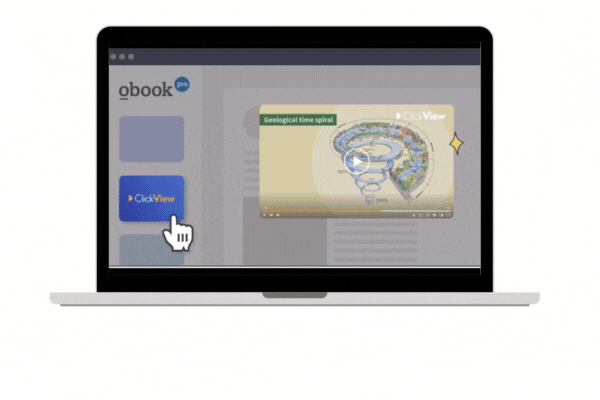
Shop the series
Chemistry for Queensland
Units 1 & 2 (Second edition)
Essential Digital & Print (Student)
Premium Digital & Print (Student)
Learn moreDIGITAL & PRINT
Chemistry for Queensland
Units 1 & 2 (Second edition)
Essential Digital Access (Student)
Learn morePremium Digital Access (Student)
Learn moreDIGITAL (STUDENT)
Chemistry for Queensland
Units 1 & 2 (Second edition)
Teacher digital access available to adopting schools
DIGITAL (TEACHER)
Chemistry for Queensland
Units 3 & 4 (Second edition)
Essential Digital & Print (Student)
Premium Digital & Print (Student)
Learn moreDIGITAL & PRINT
Chemistry for Queensland
Units 3 & 4 (Second edition)
Essential Digital Access (Student)
Learn morePremium Digital Access (Student)
Learn moreDIGITAL (STUDENT)
Biology for Queensland
Units 3 & 4 (Second edition)
Teacher digital access available to adopting schools
DIGITAL (TEACHER)
| Essential | Premium | |
|---|---|---|

DIGITAL |
$59.95 per student per year |
$69.95 per student per year |

DIGITAL & PRINT |
$89.95 Includes: Essential Digital $59.95 per student per year + Print Student Book $30.00 one-time purchase |
$99.95 Includes: Premium Digital $69.95 per student per year + Print Student Book $30.00 one-time purchase |
*Complimentary teacher annual subscription for adopting schools.
Premium access only available to teachers if all students subscribe.
Contact us to learn more
Revision and Exam Guides written by expert teachers and examiners to help students prepare for their QCE External Assessments and achieve their very best!
Learn More
